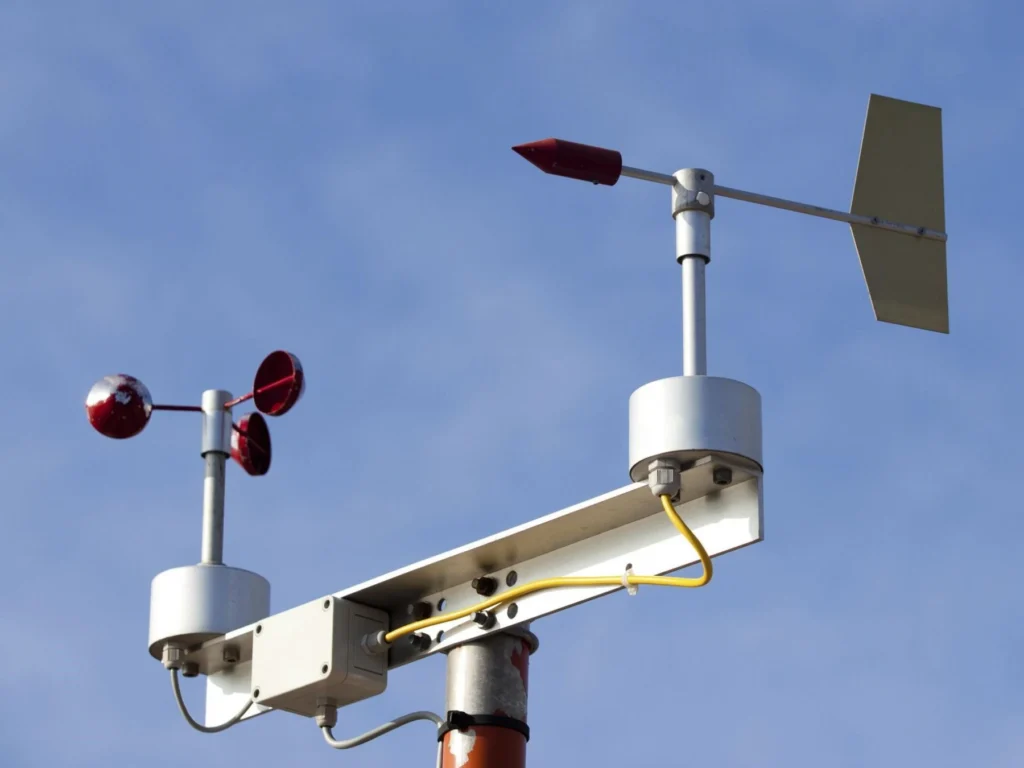
# Anemometer: The Instrument for Measuring Wind Speed
## Introduction to Anemometers
An anemometer is a device used to measure wind speed, an essential parameter in meteorology, aviation, and various environmental studies. The term “anemometer” is derived from the Greek word “anemos,” meaning wind, and “metron,” meaning measure. This instrument plays a crucial role in understanding weather patterns, assessing wind energy potential, and ensuring safety in various industries.
## Types of Anemometers
There are several types of anemometers, each designed for specific applications and environments. The most common types include:
### 1. Cup Anemometers
Cup anemometers are the most traditional and widely used type. They consist of three or four cups mounted on horizontal arms, which rotate when exposed to wind. The rotation speed is proportional to the wind speed, and this data is then converted into a readable measurement.
### 2. Vane Anemometers
Vane anemometers, also known as windmill anemometers, feature a propeller or a set of blades that rotate in response to wind. These devices are often used in handheld applications and are particularly useful for measuring wind speed and direction simultaneously.
### 3. Hot-Wire Anemometers
Hot-wire anemometers use a thin wire heated to a constant temperature. As wind passes over the wire, it cools down, and the amount of cooling is proportional to the wind speed. These anemometers are highly sensitive and are often used in laboratory settings and for measuring low wind speeds.
### 4. Ultrasonic Anemometers
Ultrasonic anemometers measure wind speed by emitting ultrasonic sound waves and detecting the time it takes for these waves to travel between sensors. Changes in the travel time due to wind speed are used to calculate the wind velocity. These devices are highly accurate and are often used in meteorological stations and research.
## Applications of Anemometers
Anemometers are used in a wide range of applications, including:
### 1. Weather Forecasting
Meteorologists rely on anemometers to gather data on wind speed and direction, which are critical for weather prediction models. Accurate wind measurements help in forecasting storms, hurricanes, and other weather phenomena.
### 2. Wind Energy
In the renewable energy sector, anemometers are essential for assessing the potential of wind farms. By measuring wind speed over time, engineers can determine the feasibility and efficiency of wind turbines in a given location.
### 3. Aviation
Pilots and air traffic controllers use anemometers to monitor wind conditions at airports. Accurate wind speed data is crucial for safe takeoffs, landings, and flight planning.
### 4. Environmental Studies
Researchers use anemometers to study wind patterns and their impact on ecosystems. This data is valuable for understanding climate change, air quality, and the dispersion of pollutants.
## Conclusion
Anemometers are indispensable tools for measuring wind speed, providing critical data for various scientific, industrial, and safety applications. With advancements in technology, modern anemometers offer greater accuracy and versatility, making them essential instruments in our quest to understand and harness the power of the wind.
Keyword: instrument to measure wind speed